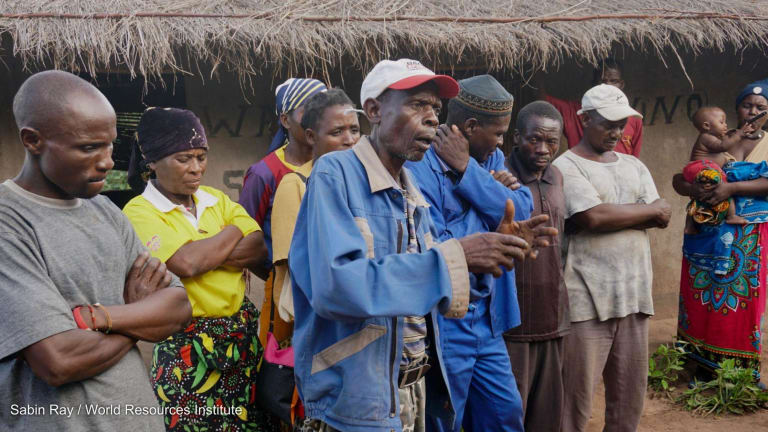
It’s not too often you see a packed room in Washington, D.C. when a government agency releases a progress report. But that was exactly the scene on Wednesday, March 20, at an event sponsored by the American Enterprise Institute and the Center for American Progress, where USAID Administrator Raj Shah unveiled the agency’s report on its signature reform initiative — USAID Forward.
In his remarks, Shah tied the agency’s work to the vision laid out by U.S. President Barack Obama in his State of the Union address when he “called upon us to join the world in ending extreme poverty in the next two decades.” As outlined in the progress report, the evolution of USAID Forward certainly moves the agency closer to this goal. It has correctly reframed USAID Forward from merely a focus on seven largely internal goals of rebuilding the capacity of the agency to a focus on three results-based outcomes: 1) aligning resources better with the priorities of local civil society and partner countries, 2) promoting sustainable development through building local capacity, and 3) identifying new innovations that can be scaled up to achieve better results.
The report highlights what USAID is working towards at its core: helping people and countries lift themselves out of poverty, promoting “local solutions” — a far more meaningful way to convey agency actions than USAID’s previous term “implementing procurement reform.” We have long advocated for reforms in the delivery of aid that promote country ownership and we welcome the recent U.S. government focus on local solutions. The fact that USAID is implementing real reforms should be noticed by both parties on Capitol Hill.
If anything, we would like to see USAID be bolder in its efforts to build the capacity of local civil society organizations and strengthen country systems. One way to do this would be to take advantage of the decades of experience U.S. non-governmental organizations have working with people, organizations and countries around the world to build better lives for themselves, their children and their communities. USAID Advisory Committee on Voluntary Foreign Aid’s recent recommendations on best practices in local capacity building acknowledged “the agency should better leverage the knowledge, skills, and resources that its current LCD partners — both in the U.S. and overseas — bring to the table.” USAID is putting its money where its mouth is: on the same day of the release of the progress report, it convened partners to discuss the strengthening of country systems.
Overall, the USAID Forward report had a good balance of outlining progress on the agency’s work and being honest about the challenges that lie ahead. We applaud the focus on accountability and selectivity. Notable is applying the lessons learned from the completion of 186 high-quality evaluations and the decision to phase out 38 food security and global health programs that were too small to have a meaningful impact.
We’d still like to see USAID do better in certain areas. One would be to improve consultations on country development cooperation strategies, which have been spotty. And USAID could do more to be transparent. The report is full of data points and colorful graphs, but without releasing the data behind the report, it is impossible to see the big picture of U.S. spending on foreign assistance. In particular, raw data could help observers determine the amount of support for different types of organizations and whether other goals of USAID Forward not mentioned in the report are being met. We hope the agency will build on its effort to be open and candid by releasing this raw data soon, so the American people and those we help around the world can develop a fuller picture of the progress being made.
Join the Devex community and access more in-depth analysis, breaking news and business advice – and a host of other services – on international development, humanitarian aid and global health.








